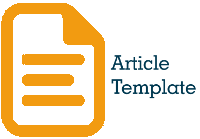Analysis of Student Reading Interest in UNSIKA Library with K-Means Algorithm
DOI:
https://doi.org/10.35457/antivirus.v18i1.2926Keywords:
Clusterization, K-Means, Reading Interest, Library, RapidMinerAbstract
This study aims to analyze students' reading interest at the Singaperbangsa Karawang University Library using the K-Means algorithm. The K-Means method is used to group books based on borrowing patterns, so as to provide better insight into students' reading preferences and assist libraries in managing book collections. Book borrowing data was obtained from the university librarian database, while literature study was carried out by studying and looking for references in related journals and literature. After the data is clean and can be processed, the clustering process is carried out using the K-Means algorithm by determining the value of k. The clustering results are displayed in the form of a table showing the groups of books that are frequently borrowed, books with a moderate borrowing frequency, and books that are rarely borrowed by students. Cluster quality evaluation was carried out using the Davies Bouldin value. The findings of this study indicate that the K-Means algorithm is effective in classifying books based on borrowing patterns. With a better understanding of students' reading interest, libraries can optimize the placement of books, increase the availability of books of interest, and develop strategies to increase overall student reading interest. The results of this study make a significant contribution to the development of university libraries and provide useful guidelines for decision-making in library management.
Downloads
References
[2] R. Taylor, “Impact of Text Interest on Reading Comprehension,” 2020.
[3] R. Muliono and Z. Sembiring, “DATA MINING CLUSTERING MENGGUNAKAN ALGORITMA K-MEANS UNTUK KLASTERISASI TINGKAT TRIDARMA PENGAJARAN DOSEN,” 2019.
[4] R. A. Farissa, R. Mayasari, and Y. Umaidah, “Perbandingan Algoritma K-Means dan K-Medoids Untuk Pengelompokkan Data Obat dengan Silhouette Coefficient,” 2021. [Online]. Available: http://jurnal.polibatam.ac.id/index.php/JAIC
[5] F. Pramataning Dewi, P. Siwi Aryni, and Y. Umaidah, “Implementasi Algoritma K-Means Clustering Seleksi Siswa Berprestasi Berdasarkan Keaktifan dalam Proses Pembelajaran,” MEI, 2011.
[6] N. Salsabila, N. Sulistiyowati, and T. N. Padilah, “Pencarian Pola Pemakaian Obat Menggunakan Algoritma FP-Growth,” 2022. [Online]. Available: http://jurnal.polibatam.ac.id/index.php/JAIC
[7] M. Afdal, M. Rosadi, P. Studi Sistem Informasi, F. H. Sains dan Teknologi UIN Suska Riau Jl Soebrantas KM, and P. Pekanbaru -Riau, “PENERAPAN ASSOCIATION RULE MINING UNTUK ANALISIS PENEMPATAN TATA LETAK BUKU DI PERPUSTAKAAN MENGGUNAKAN ALGORITMA APRIORI,” Jurnal Ilmiah Rekayasa dan Manajemen Sistem Informasi, vol. 5, no. 1, 2019.
[8] A. Kurnia, “Perbandingan Algoritma K-Means dan Fuzzy C-Means Untuk Clustering Puskesmas Berdasarkan Gizi Balita Surabaya,” Jurnal PROCESSOR, vol. 18, no. 1, Apr. 2023, doi: 10.33998/processor.2023.18.1.696.
[9] D. D. Abdurrahman, F. Agus, and G. M. Putra, “Implementasi Algoritma Partitioning Around Medoids (PAM) untuk Mengelompokkan Hasil Produksi Komoditi Perkebunan (Studi Kasus: Dinas Perkebunan Provinsi Kalimantan Timur),” Informatika Mulawarman : Jurnal Ilmiah Ilmu Komputer, vol. 16, no. 2, p. 130, Oct. 2021, doi: 10.30872/jim.v16i2.6520.
[10] B. G. Sudarsono, M. I. Leo, A. Santoso, and F. Hendrawan, “ANALISIS DATA MINING DATA NETFLIX MENGGUNAKAN APLIKASI RAPID MINER,” JBASE - Journal of Business and Audit Information Systems, vol. 4, no. 1, Apr. 2021, doi: 10.30813/jbase.v4i1.2729.
[11] N. Chakimah Mutharoh, “Perspektif Mahasiswa S-1 Ilmu Perpustakaan Universitas Diponegoro dalam Menanggapi Judul Clickbait pada Portal Berita Online di Indonesia,” ANUVA, vol. 6, no. 4, pp. 455–464, 2022.
[12] R. Y. Sari, H. Oktavianto, and H. W. Sulistyo, “ALGORITMA K-MEANS DENGAN METODE ELBOW UNTUK MENGELOMPOKKAN KABUPATEN/KOTA DI JAWA TENGAH BERDASARKAN KOMPONEN PEMBENTUK INDEKS PEMBANGUNAN MANUSIA.”
Downloads
Published
Issue
Section
License
Authors who publish with this journal agree to the following terms:
- Copyright on any article is retained by the author(s).
- Author grant the journal, right of first publication with the work simultaneously licensed under a Creative Commons Attribution License that allows others to share the work with an acknowledgement of the work’s authorship and initial publication in this journal.
- Authors are able to enter into separate, additional contractual arrangements for the non-exclusive distribution of the journal’s published version of the work (e.g., post it to an institutional repository or publish it in a book), with an acknowledgement of its initial publication in this journal.
- Authors are permitted and encouraged to post their work online (e.g., in institutional repositories or on their website) prior to and during the submission process, as it can lead to productive exchanges, as well as earlier and greater citation of published work.
- The article and any associated published material is distributed under the Creative Commons Attribution-ShareAlike 4.0 International License











